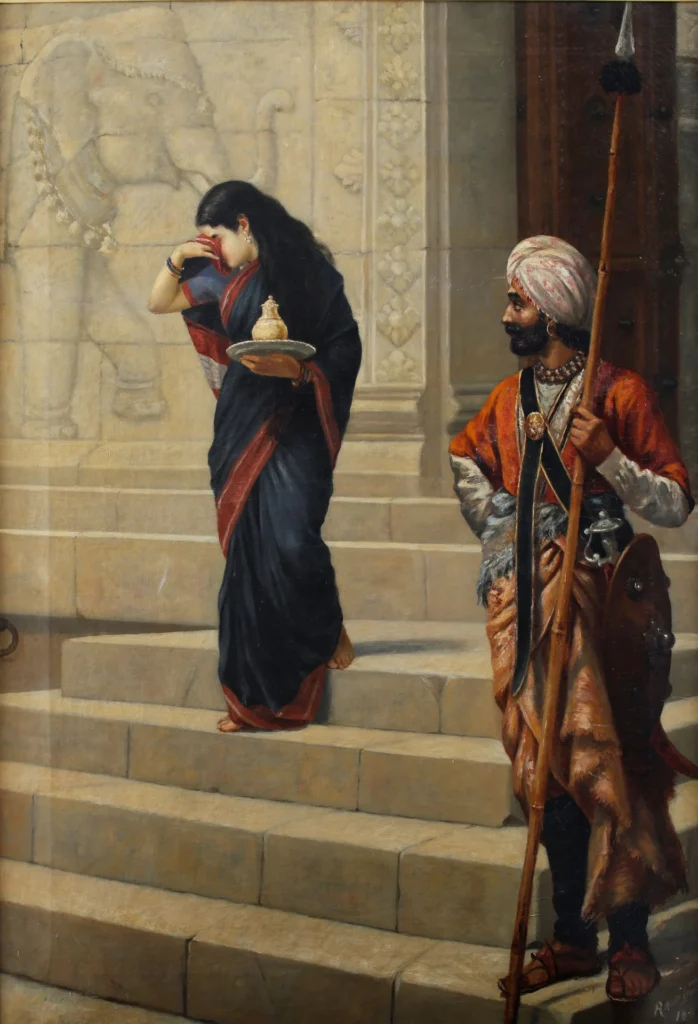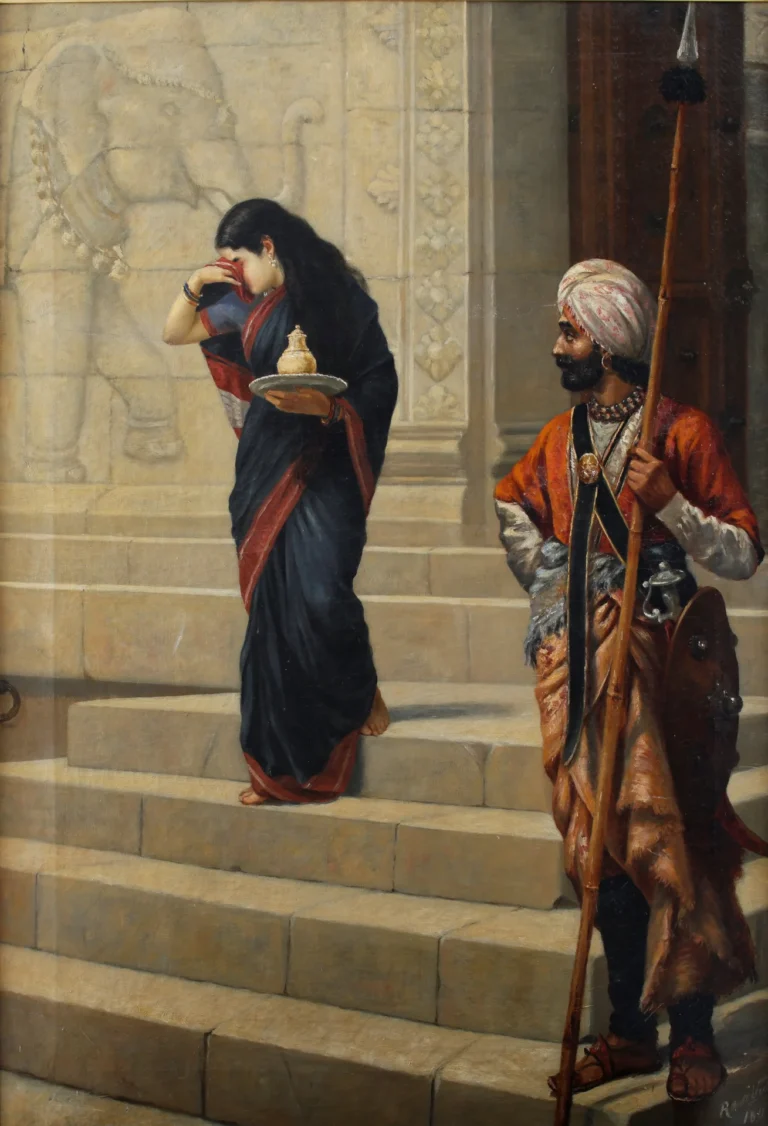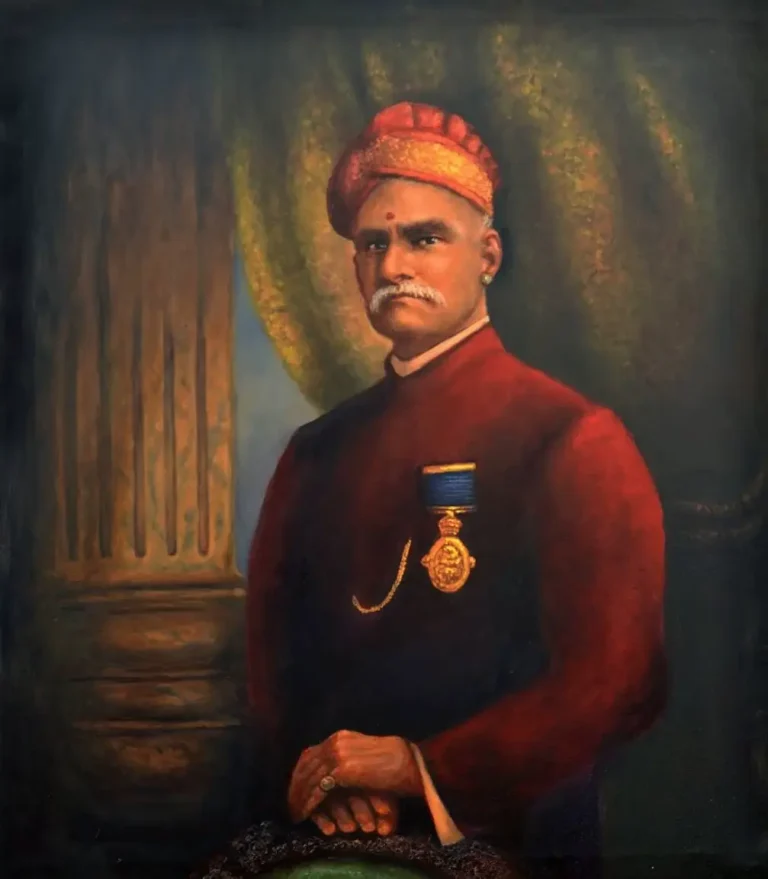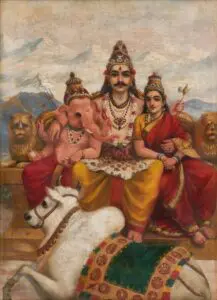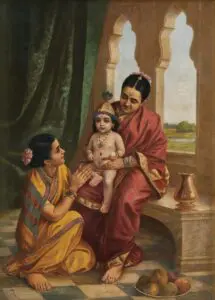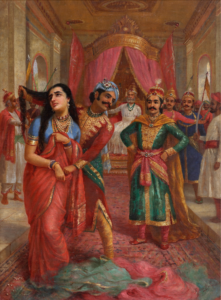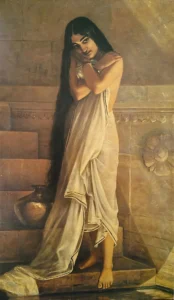Sairandhri
Sairandhri is a powerful portrayal of Draupadi, a central character from the Mahabharata, depicted in her secret identity as Sairandhri, a maidservant. The painting captures a poignant moment as she hesitantly approaches the court of Keechaka, conveying her inner turmoil and reluctant submission. The use of vibrant colors and intricate details exemplifies Raja Ravi Varma's masterful technique, effectively blending traditional Indian themes with European art styles. This artwork serves as a cultural commentary on the complexities of identity and desire.
Year 1891
About the Artwork
Sairandhri tells an intriguing story from the Mahabharata, where Draupadi, in a time of hardship, disguises herself to avoid recognition. Ravi Varma captures this moment capturing her resolve against Keechaka's monstrous desires, which symbolizes the overarching themes of courage and resilience throughout the epic. The portrayal of Draupadi's predicament reflects not only her personal struggle but also resonates with broader societal issues concerning women's agency during ancient India, emphasizing the timeless conflicts of power and dignity.
Did You Know
Draupadi, as depicted in Sairandhri, plays a crucial role in the Mahabharata and is often celebrated for her strength and resolve amidst adversity, making her a symbol of womanhood in Indian literature.
Raja Ravi Varma is often regarded as the father of modern Indian art, as his unique fusion of traditional themes with Western techniques paved the way for contemporary artists in India.
Sairandhri won a medal at the Bombay Fine Arts Society, establishing Varma’s reputation and contributing significantly to the recognition of Indian art on global platforms.




